#Kenneth MacLean
Explore tagged Tumblr posts
Text
GRACIAS AL APOYO DE USAID, MÁS DE 100, 000 NIÑOS DE PREBÁSICA

View On WordPress
0 notes
Text






Happy Birthday Kenneth Campbell "Ken" Stott, born on October 19th 1954 in Edinburgh.
One of my favourite actors, as hard-drinking Detective hero of Ian Rankin's popular book he was Inspector John Rebus to me. Ken's Father was Scottish and a teacher, his mum a Sicilian, he went to the famous George Herriots school before going onto to Mountview Theatre School, where the distinguished actor Sir John Mills was president. Fellow Scot Douglas Henshall was also a student of the school. Before leaving Edinburgh Stott had been in a band called Keyhole some of the members of the group would later join the Bay City Rollers.
Ken went on to work with the Royal Shakespeare Company but the pay was poor and he subsidised his earnings by selling double glazing. His first TV role was in Secret Army for the BBC, parts in TV shows throughout his career have included, Taggart (of course) The Singing Detective, London's Burning, Your Cheatin' Heart and Silent Witness. He was insome good films too, The Debt Collector (with Billy Connolly) , Shallow Grave, (with Ewen MacGregor) and Plunkett & Macleane (with Robert Carlyle).
My favourite shows of Ken's have been the brilliant BBC Scotland series, Takin' Over the Asylum in which starred as Double Glazing salesman, but aspiring disc jockey
with David Tennant and Angus Macfadyen,The ITV series The Vice was also a cracking series where he played DI Pat Chappel and The BBC show Messiah, where again he played a cop, DCI Red Metcalfe where he learned sign language for scenes with his screen wife,and Rebus of course, when the show was resurrected in 2006, Stott was a first choice for many as D.I John Rebus, John Hannah had the role in the first incarnation, mainly due to it being made by his own production company.
On film Ken is probably best known for his role as the Dwarf, Balin in The Hobbit trilogy. He is a popular choice for voice work, as narrator for series such as Trawlermen, a documentary following North Sea trawlers, and Send in the Dogs, following the work of Police Officers and their canine partners.
One of my favourite stories about Ken Stott echoes the no nonsense approach of Rebus, on stage during Arthur Miller's A View From The Bridge, he halted the play when a group of teenage schoolkids were misbehaving and disturbing the show, switching from his stage American to his native Scots accent he told the teacher responsible for the children to remove them, or the play would not go on.
The house lights were switched on and there was then a 15-minute stand-off as discussions took place with the offending youngsters.
The audience took the side of Stott and even resorted to chanting 'out, out, out' in extraordinary scenes. Eventually the three culprits and an embarrassed teacher was forced to creep away before the play resumed at the Duke of York's Theatre.
Of his recent stuff check out The Dig,, it a decent film and based on a true story of an archaeologist embarks on the historically important excavation of Sutton Hoo in 1938.
I can't see anything happening on Ken's IMDb page, but there is a third series of the Irvine Welsh show Crime in development, so I expect he will reappear in that.
27 notes
·
View notes
Text
SLLACC 2017: Stan Lee's Los Angeles Comic Con announces more guests including Chloe Bennet, Greg Capullo, Ryan Meinerding
SLLACC 2017: Stan Lee’s Los Angeles Comic Con announces more guests including Chloe Bennet, Greg Capullo, Ryan Meinerding
Stan Lee’s Los Angeles Comic Con announced some more special guests for their convention that will be happening this October 27th-29th including Chloe Bennet, Greg Capullo, Mark Bagley, Tom King, Ryan Meinerding, James O’Barr. In addition from the Power Rangers Austin St. John, Walter Jones, David Yost, Karan Ashley and Zordon himself David Fielding will be in attendance. More information is…
View On WordPress
#Andrew MacLean#Austin St. John#Chloe Bennet#David Fielding#david yost#Diane Pershing#Greg Capullo#Greg Cipes#James O&039;Barr#James Tynion#Karan Ashley#Ken Lashley#Kenneth Rocafort#Mark Bagley#Nick Gazin#Phil Lamarr#Power Rangers#Ryan Meinerding#stan lee&039;s los angeles comic con#Tom King#walter jones#Wil Quintana
1 note
·
View note
Text
This is historical not etymological but Scotclans and clan.com are incredible boredom killers so I wanted to join in.
Nathan MacKinnon is from Clan MacKinnon (originally in gaelic it's MacFhionghuin) which claims to be descended from the royal family of Kenneth MacAlpine. The clan slogan of “Cumnich Bas Alpin” or “Remember the death of Alpin” refers to the great-grandson of Kenneth, who was slain by Bruch, King of the Picts, in 837. His son Fingon, or “fair-born” is hailed as the progenitor of the clan. The 2 most important parts of clan history are that they fucking hate the MacLeans (neighbouring clan) and they supported the Stewart dynasty, having provided shelter to a 70 year Charles Edward Stewart.
Mason McTavish is a part of clan MacTavish; the Mc instead of Mac usually signifies having settled/been pushed into the Ulster region of Ireland and is common to find amongst highland clans and the MacTavish's are from the west Highlands since the 12th century. The name MacTavish is derived from the phoenetic pronunciation of MacTamhais which means “Son of Tammais” (Son of Thomas). It is likely that this changed in the 17th century as Gaelic was forcibly removed, this would be when Thompson became used as a variation. There's some claim that it's an offshoot of clan Campbell and for some reason some associate it with the moniker "The Children of the Mist" which is from clan MacGregor but anyways the motto is "Non Oblitus" which means forget not.
The Scottish clan websites that I've checked are confident that (Kurtis) MacDermid is a part of Clan Campbell (in Gaelic Caimbeul) and the list of associated names is so fucking long I don't understand it but they have been super influential since the mid 1400s onward. The first occurrence of the name Cambel (how it was originally spelt) found in surviving records owned land near Stirling in 1263. For a Cambel in Argyll the first records date from 1293 for Duncan Dubh, a landowner from Kintyre. Written records for Cambels in Lochawe date from 1296 where it is documented that Sir Cailein was killed after being attacked by Clan Dougall. The clan mythology is that in the 11th or 12th century either Smevie or Mervvn, son of Arthur (yes, that Arthur), became known as "the Wildman of the Woods" used a variation of the name OR that the first of the Campbell's who came to Argyll and married the heiress of the O’Duibne tribe, a lady called Eva, daughter of Paul an Sporran and that they lived near Lochawe. It was under King David (son of Robert the Bruce) introducing more efficient administration that it changed from Cambel to Campbell, the originally most likely came from Sir Cailein Mor Campbell’s grandfather Dugald on Lochawe who was nicknamed "Cam Beul" (curved mouth in Gaelic). I don't know why it got so many variations, like MacDermid, Gibson, Ure, Burns, Loudoun, Kissack, and Malcolm (and more!) all seem so unrelated but whatever.
Anyways you can find this for most Scottish names and Anglicized Irish names (or ones that start with Mc) and it's very fun, some, like the MacCallum's, have stupid (mythological) origin stories.
love name etymology. tkachuk means "weaver." ovechkin means "shepherd" or "sheep." bergeron also means "sheperd." i don't have anywhere to go from here i don't know what the point of this post is. symbolism lives within us all i guess
331 notes
·
View notes
Text




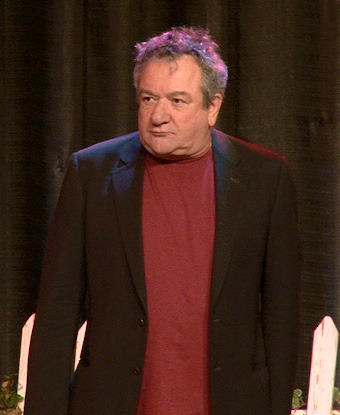
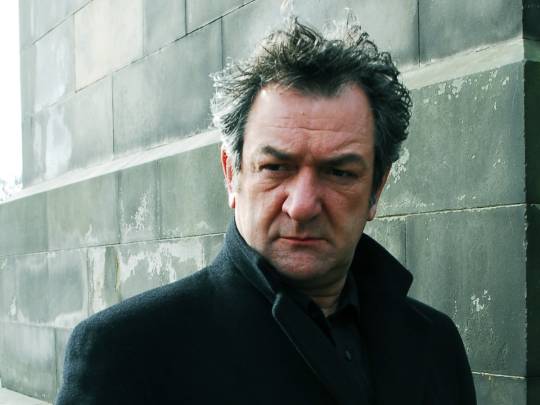
Happy Birthday Kenneth Campbell "Ken" Stott, born on October 19th 1954 in Edinburgh.
One of my favourite actors, as hard-drinking Detective hero of Ian Rankin's popular book he was Inspector John Rebus to me. Ken's Father was Scottish and a teacher, his mum a Sicilian, he went to the famous George Herriots school before going onto to Mountview Theatre School, where the distinguished actor Sir John Mills was president. Fellow Scot Douglas Henshall was also a student of the school. Before leaving Edinburgh Stott had been in a band called Keyhole some of the members of the group would later join the Bay City Rollers.
Ken went on to work with the Royal Shakespeare Company but the pay was poor and he subsidised his earnings by selling double glazing. His first TV role was in Secret Army for the BBC, parts in TV shows throughout his career have included, Taggart (of course) The Singing Detective, London's Burning, Your Cheatin' Heart and Silent Witness. He was insome good films too, The Debt Collector (with Billy Connolly) , Shallow Grave, (with Ewen MacGregor) and Plunkett & Macleane (with Robert Carlyle).
My favourite shows of Ken's have been the brilliant BBC Scotland series, Takin' Over the Asylum in which starred as Double Glazing salesman, but aspiring disc jockey
with David Tennant and Angus Macfadyen,The ITV series The Vice was also a cracking series where he played DI Pat Chappel and The BBC show Messiah, where again he played a cop, DCI Red Metcalfe where he learned sign language for scenes with his screen wife,and Rebus of course, when the show was resurrected in 2006, Stott was a first choice for many as D.I John Rebus, John Hannah had the role in the first incarnation, mainly due to it being made by his own production company.
On film Ken is probably best known for his role as the Dwarf, Balin in The Hobbit trilogy. He is a popular choice for voice work, as narrator for series such as Trawlermen, a documentary following North Sea trawlers, and Send in the Dogs, following the work of Police Officers and their canine partners.
One of my favourite stories about Ken Stott echoes the no nonsense approach of Rebus, on stage during Arthur Miller's A View From The Bridge, he halted the play when a group of teenage schoolkids were misbehaving and disturbing the show, switching from his stage American to his native Scots accent he told the teacher responsible for the children to remove them, or the play would not go on.
The house lights were switched on and there was then a 15-minute stand-off as discussions took place with the offending youngsters.
The audience took the side of Stott and even resorted to chanting 'out, out, out' in extraordinary scenes. Eventually the three culprits and an embarrassed teacher was forced to creep away before the play resumed at the Duke of York's Theatre.
Recently Ken was in the TV series Devils playing professor Wade in the show. Look out for The Dig, a decent Netflix film about an archaeologist dig in England in 1938 also starring Ralph Fiennes.
Ken reprised his role as Chief Superintendent Bob Toal in the second series of Irvine Welsh's Edinburgh set cop show Crime.
Nominated for many awards, he was lifted two Scottish Baftas and a Laurence Olivier Award.
14 notes
·
View notes
Text
Focused scrutiny pathfinder

#Focused scrutiny pathfinder license
Swords of Our Fathers, Copyright 2003, The Game Mechanics.Psionics Unleashed, Copyright 2010, Dreamscarred Press.Psionics Augmented, Copyright 2013, Dreamscarred Press.Psionic Bestiary, Copyright 2013, Dreamscarred Press.Pathfinder Roleplaying Game Ultimate Magic, Copyright 2011, Paizo Publishing, LLC Authors: Jason Bulmahn, Tim Hitchcock, Colin McComb, Rob McCreary, Jason Nelson, Stephen Radney-MacFarland, Sean K Reynolds, Owen K.C.Hunt, Colin McComb, Jason Nelson, Tom Phillips, Patrick Renie, Sean K Reynolds, and Russ Taylor. Cortijo, Jim Groves, Tim Hitchcock, Richard A. Pathfinder Roleplaying Game Ultimate Combat, Copyright 2011, Paizo Publishing, LLC Authors: Dennis Baker, Jesse Benner, Benjamin Bruck, Jason Bulmahn, Brian J.Pathfinder Roleplaying Game Advanced Race Guide, Copyright 2012, Paizo Publishing, LLC Authors: Dennis Baker, Jesse Benner, Benjamin Bruck, Jason Bulmahn, Adam Daigle, Jim Groves, Tim Hitchcock, Hal MacLean, Jason Nelson, Stephen Radney-MacFarland, Owen K.C.Sutter, Russ Taylor, Penny Williams, Skip Williams, Teeuwynn Woodruff. Wesley Schneider, Amber Scott, Doug Seacat, Mike Selinker, Lisa Stevens, James L. Frost, James Jacobs, Kenneth Hite, Steven Kenson, Robin Laws, Tito Leati, Rob McCreary, Hal Maclean, Colin McComb, Jason Nelson, David Noonan, Richard Pett, Rich Redman, Sean K Reynolds, F. Pathfinder RPG GameMastery Guide, Copyright 2010, Paizo Publishing, LLC Author: Cam Banks, Wolfgang Baur, Jason Bulmahn, Jim Butler, Eric Cagle, Graeme Davis, Adam Daigle, Joshua J.Pathfinder RPG Core Rulebook, Copyright 2009, Paizo Publishing, LLC Author: Jason Bulmahn, based on material by Jonathan Tweet, Monte Cook, and Skip Williams.Pathfinder RPG Bestiary, Copyright 2009, Paizo Publishing, LLC Author: Jason Bulmahn, based on material by Jonathan Tweet, Monte Cook, and Skip Williams.Pathfinder Companion: Sargava, the Lost Colony, Copyright 2010, Paizo Publishing, LLC Author: JD Wiker.Mutants & Masterminds, Copyright 2002, Green Ronin Publishing.Mindscapes, Copyright 2003–2004, Bruce R.Legendary VI: Legendary Armor, Copyright 2012, Purple Duck Games Author: Marc Radle.If Thoughts Could Kill, Copyright 2001–2004, Bruce R.Hyperconscious: Explorations in Psionics, Copyright 2004, Bruce R Cordell.Advanced Player’s Guide, Copyright 2010, Paizo Publishing, LLC Author: Jason Bulmahn.
#Focused scrutiny pathfinder license
The text on this page is Open Game Content, and is licensed for public use under the terms of the Open Game License v1.0a.

0 notes
Text
Dialogues Conversations with my Higher Self
Dialogues Conversations with my Higher Self
Dialogues Conversations with my Higher Self Kenneth James Michael MacLean The author engages in a fascinating and wide ranging metaphysical discussion about the nature of consciousness, reincarnation, and the purpose and meaning of life. “Dialogues” is a companion to the author’s “The VIbrational Universe. Topics covered are Time, Birth and Death, the Origin of the Universe, Consciousness,…

View On WordPress
0 notes
Photo

“Toronto Broker Gets Prison Term,” Windsor Star. February 27, 1942. Page 18. ---- BELLEVILLE, Feb. 27. - Richard Hughes, investment broker of Toronto, was sentenced to three years in Kingston Penitentiary by Judge E. Madden here yesterday after a trial of one week. Archibald J. Butler, also of Toronto, was sentenced to two years less a day in the Ontario Reformatory.
It was charged they conspired to defraud Kenneth J. Mackenzie, Walkerton. by obtaining from him monies or valuable securities by means of representations in connection with the Huchmar Gold Mines Limited for shares of the said company.
[AL: Hughes, as a man with some money (he claimed to the prison authorities he was making $100 a week as a broker), launched an immediate appeal, though his attempt to lessen his sentence was dismissed in June 1942. 52, married with two children, Hughes had come to Canada in 1910 from Scotland, and was living on MacLean avenue in Toronto. At Kingston Penitentiary, he was convict #6967, and worked as a cleaner. In September 1942 he was transferred to Collin’s Bay penitentiary and was released on parole from there in October 1943.]
#belleville#walkerton#investment broker#defrauding investors#fraud#fraud artist#conspiracy to defraud#obtaining money under false pretences#stock salesmen#scottish immigration to canada#sentenced to the penitentiary#kingston penitentiary#canada during world war 2#history of crime and punishment in canada#crime and punishment in canada
1 note
·
View note
Text


It is good to have a GOOD cultural FEEL for the future!
CIQ
Cultural Intelligence Quotient
I Seek You Out!
ICQ
Rally Round the Flag, Boys!
This is everything about my rise to prominence as a Universynthesizer!
Instruction manual for a superrich rock group...
Kenneth Cooper
healthy fitness enthusiasts doing their "Coopers" on the Copacabana beach in Rio de Janeiro
Leap of Faith
Book by Gordon Cooper
Gordon Cooper
American engineer
Leroy Gordon "Gordo" Cooper Jr. was an American aerospace engineer, test pilot, United States Air Force pilot, and the youngest of the seven original astronauts in Project Mercury, the first human space program of the United States.
Quantum Leap
Quantum Coach
Shirley MacLean Beaty
Billy Dee Williams
American actor
Lando Calrissian
Star Wars character
William December "Billy Dee" Williams Jr. is an American actor
(Tuesday, April 6th, 1937)
Trabant Satellite Bodyguard
Open Happiness "Sprite"
Amei commercial success
https://m.youtube.com/watch?v=eWsjtHWQytA
DEAR TUMBLR,
Please review my posts and restore my public domain website!
THANK YOU!
(UNIVERSYNTHESIZER)
It is good to have a GOOD cultural FEEL for the future!
CIQ
Cultural Intelligence Quotient
I Seek You Out!
ICQ
Rally Round the Flag, Boys!
This is everything about my rise to prominence as a Universynthesizer!
Instruction manual for a superrich rock group...
Kenneth Cooper
healthy fitness enthusiasts doing their "Coopers" on the Copacabana beach in Rio de Janeiro
Leap of Faith
Book by Gordon Cooper
Gordon Cooper
American engineer
Leroy Gordon "Gordo" Cooper Jr. was an American aerospace engineer, test pilot, United States Air Force pilot, and the youngest of the seven original astronauts in Project Mercury, the first human space program of the United States.
Quantum Leap
Quantum Coach
Shirley MacLean Beaty
Billy Dee Williams
American actor
Lando Calrissian
Star Wars character
William December "Billy Dee" Williams Jr. is an American actor
(Tuesday, April 6th, 1937)
German
Trabant Satellite Bodyguard
Ein Geschmack von Honig Songtext
Text eines Songs lyrics of a song
Open Happiness "Sprite"
Amei commercial success
https://m.youtube.com/watch?v=eWsjtHWQytA
A Taste of Honey Lyrics
A taste of honey... tasting much sweeter than wine
I dream of your first kiss, and then
I feel upon my lips again
A taste of honey... tasting much sweeter than wine
I will return, yes I will return
I'll come back for the honey and you
Yours was the kiss that awoke my heart
There lingers still, 'though we're far apart
That taste of honey... tasting much sweeter than wine
I will return, yes I will return
I'll come back (he'll come back) for the honey (for the honey) and you
"A Taste Of Honey"
Winds may blow o'er the icy sea
I'll take with me the warmth of thee
A taste of honey
Honey much sweeter than wine
I will return
I'll return
I'll come back for the honey and you
I'll leave behind my heart to wear
And may it e'er remind you of
A taste of honey
Honey much sweeter than wine
I will return
I'll return
I'll come back for the honey and you
He ne'er came back to his love so fair
And so she died dreaming of his kiss
His kiss was honey
Honey much sweeter than wine
I will return
I'll return
I'll come back for the honey and you
I'll come back for the honey and you
"A Taste Of Honey"
A taste of honey... tasting much sweeter than wine.
I dream of your first kiss, and then,
I feel upon my lips again,
A taste of honey... tasting much sweeter than wine.
I will return, yes I will return,
I'll come back for the honey and you.
Yours was the kiss that awoke my heart,
There lingers still, 'though we're far apart,
That taste of honey... tasting much sweeter than wine.
I will return, yes I will return,
I'll come back (he'll come back) for the honey (for the honey) and you.
Roger Whittaker Lyrics
Roger Henry Brough Whittaker is a British singer-songwriter
John Royce "Johnny" Mathis
The Shadow of Your Smile
Johnny Mathis
The shadow of your smile
When you are gone
Will color all my dreams
And light the dawn
Look into my eyes, my love, and see
All the lovely things, you are to me
Our wishful little star
Was far, too high
A teardrop kissed your lips
And so did I
Now when I remember spring
All the joys that love can bring
I will be remembering
The shadow of your smile
A teardrop kissed your lips
And so did I
Now when I remember spring
All the joy that love can bring
I will be remembering
The shadow of your smile
(End)
A taste of honey... tasting much sweeter than wine.
I dream of your first kiss, and then,
I feel upon my lips again,
A taste of honey... tasting much sweeter than wine.
I will return, yes I will return,
I'll come back for the honey and you.
Yours was the kiss that awoke my heart,
There lingers still, 'though we're far apart,
That taste of honey... tasting much sweeter than wine.
I will return, yes I will return,
I'll come back (he'll come back) for the honey (for the honey) and you.
The Beatles
A taste of honey
Tasting much sweeter than wine
Do do do
Do do do
I dream of your first kiss, and then
I feel upon my lips again
A taste of honey (a taste of honey)
Tasting much sweeter than wine
Oh, I will return, yes, I will return
I'll come back for the honey and you
Do do do
Do do do
Yours was the kiss that awoke my heart
There lingers still, though we're far apart
That taste of honey, a taste of honey
Tasting much sweeter than wine
Oh, I will return, yes, I will return
I'll come back (he'll come back)
For the honey (for the honey)
And you
0 notes
Video
vimeo
Adidas "Crazy" FW17 ft. 21 Savage, Playboi Carti, and Young Thug from BRTHR on Vimeo.
Directed by BRTHR DP- Kelly Jeffrey Producers- Sara Greco, Laure Salgon CD- Maclean Jackson, Mika 1st AD- Kenneth Arnold Prod Design- Lauren Nikrooz VFX- Gloria FX, BRTHR Prod Co- StrangeLove Agency- Johannes Leonardo
0 notes
Text
1822 Sunday 7 July
8 1/2
12 50/60
Letter from M- 3 pages (dated Lawton put in at Congleton) to say she cannot come now, and asks me to say by return of post “which plan will be most advisable, to risk getting leave by and by for a few days, or to meet you at Northwich” - Came upstairs at 10 35/60 and wrote 3 pages and the ends, pretty small and close, to choose her former proposition, saying I had some reasons against her meeting us at Northwich which it was needless to name now, but which made me think it best to give up the thought of this at all events - In fact, it would not look quite as I should wish - M-’s going (riding over) to sleep at an Inn (a very bad one I suppose) in that way without C- is not the thing; and, tho’ it is a bitter business to me, I cannot consent to her doing (even to give me the greatest possible pleasure) what my judgement does not quite approve - our cards are awkward ones to play - we must manage them carefully and with scrupulous regard to appearances - sent my letter to M- (Lawton) a few minutes after one by William Green - asked her to write by next Friday Saturday or Sunday without fail - wish her to send me twenty pounds if she can and to say what more she can spare before I go I have mentioned the subject so that no one could suppose I alluded to anything but a debt owing from her to me the being obliged to express myself in this sort of way clear enough to her but to mislead others makes me longer about it than I should otherwise be -
Letter also the longest I have ever had from her from Miss Maclean (Quinish, Tobermory, dated June 21st or 22nd with the Glasgow postmark of 5 July) - 3 pages the ends, and the 3 pages crossed - account of her journey - a pretty good account of herself tho’ very thin and a little cough - “I have fortunately gained a very great deal of strength since you saw me, but I am miserably thin, my clothes would contain 2 of my present size, I am quite well, except a very trifling cough - we have very fine weather, but the wind being continually north, I feel it very cold, but it has not injured my throat” - she has for some time washed her throat (I advised it in my last) with vinegar and water she also uses it for her eyes and finds it of use - “My father’s cows sold at from six to fourteen pounds each”, at his sale of agricultural stock in Coll last May - think old Coll’s cattle sold better in Coll than my father’s at Low Grange farm near Market Weighton - Miss McL- left Edinburgh 13 June - spent several days at Benhill (en I think) on the 18th she embarked in the Inverary Castle Steam vessel 200 passengers but “landed and took in many on the way as we stopt for 1/4 hour at Dumbarton, Denon’s? Port Glasgow, Greenock,.....Rothsay - next stopt at Tarbert? and then took leave of the Inverary Castle I cannot make out where - got into a cart went to a little Inn - roused the next morning at 5 to embark in the Highlander (steam vessel which took her luggage from Glasgow I suppose) at 7 about seven miles lower down the canal - “at least a hundred passengers, all on their way to Staffa and Iona - French, English, Irish, and Scotch” - they got out of the canal by 8 and passed the gulf of “Corry vrechcan”? “this dangerous spot is between the Isles of Jura and Scarba - no boat dare venture thro’, except during a half hour at high water - as the contrary tides that meet there instantly sink any vessel that unfortunately is drawn into the whirlpool - we kept close to the shore as far from it as possible, after stopping at Craignish, Blackmill bay, Esdale - Oban - Achanacraig, Artornish, Aros, we entered the harbour of Tobermorry “or ory” about seven in the evening” 10 miles by land and 16 by sea from Quinish - they then embarked in her father’s new sloop the Aros castle after a salute of 3 cannon and a blast of the shrill pipe of Duncan Mac...... “which echoed from rock to rock - this salutation surprised the strangers on board”... “after a good deal of tacking against wind and tide, we landed safely” (from the Aros Castle) “a hundred yards from the house”. - They saluted with their 3 cannon before before landing and were answered from the house by the servants......By the way the letter began with wonder at my asking Lady Seaforth’s age - after rallying me on the subject of curiosity she says, “her eldest daughter is upwards of 40, so you may guess the mother’s age ** Her eldest and only son then died six years since” - poor dear fellow no I never was deceived in an ownfamiliar friend many I have found different from what I had at first judged them to be but I never had time to search for friendships so much occupied from early life in domestic concerns - mine is not a twice but a twenty times told tale and you know how delightful it is to fill sheet after sheet with the same subject - she long afterwards expresses great indifference to prolonged life - She mentions having finished her despatches for York - which she adds I suppose will end my correspondence with the citizens I believe she likes me little time as I have I think of keeping a copy of my answer to this letter -
Wrote all the above of today which took me till 2 1/2 - I did not tell M- I had heard from Miss McL- I had neither much time nor paper, and thought it did not signify much - ** the Scotch Earldom of Seaforth was attainted and forfeited by the Mackenzies in 1715, but the title was restored as an Irish Earldom in 1771 to Kenneth MacKenzie who died in 1782 being then colonel (he had the regiment) of the 72nd - It seems he left a son who died only 6 years ago - this son must have been Earl of Seaforth, but my uncle has found no mention of him-
Wrote 2 1/2 pages to Miss Maclean pretty small and close - which took me from about three to six - In the evening read aloud sermons 2nd and 3rd volume 1 bishop Horsley - my father and uncle and aunt went to church this morning Marian was tired and staid at home - Fine day - Barometer 1 3/4 degree above changeable Fahrenheit 59˚ at 9 10/60 p.m. - Talking to my uncle near an hour after they all went to bed, and did not come upstairs till 1 50/60 -
Reference: SH:7/ML/E/6/0022
0 notes
Text
Britain Moves to Regulate Its Art Trade. Bring Your ID.

LONDON — Britain’s embattled art trade, already rattled by the potential fallout from Brexit, is bracing for new rules intended to tackle money laundering and terrorism financing that some fear could further hamstring dealers in the country.As of Friday, “art market participants” in Britain are subject to the regulations when conducting transactions worth more than 10,000 euros, or about $11,100. Under the rules, they have to register with the government’s tax agency, and dealers and auctioneers must establish the identity of the “ultimate beneficial owner” — meaning both seller and buyer — before entering into a transaction.The legislation, ratified last month by the British Parliament, introduces largely without modification a European Union directive that is at various stages of implementation in other countries in the bloc.“This is very serious. It could potentially change commonly accepted market practices,” said Kenneth Mullen, a partner at the London-based law firm Withers. “Due diligence is going to be fundamental. It does seem to mark a shift toward a more regulated industry.”The international art market is generally an exclusive, often secretive business that has thrived in part thanks to the ability of buyers and sellers to maintain their anonymity. According to Withers, legally certified photographic ID with a date of birth, as well as recent proof of the client’s residential address, will be required to conform with the British regulations, and the name should then be checked against relevant watch or sanction lists.In 2018, the global art market turned over an estimated $67.4 billion in sales, according to last year’s Art Basel and UBS global report on the sector.Britain, with London as its hub, is the second-biggest art trading nation after the United States, with 21 percent of global auction and dealer sales in 2018, according to the report. But will the new regulatory framework put British-based dealers and auction houses at a competitive disadvantage?“It’s going to be difficult for the first year or two,” said Christopher Battiscombe, the director general of the Society of London Art Dealers. “But people will get used to being more open and supplying documents.” “There are wild rumors about London being the money laundering capital of the world,” he added. “We have to be seen to be taking it seriously.”Isabella Chase, a research analyst at the Center for Financial Crime and Security Studies at the Royal United Services Institute in London, said it was impossible to estimate how much criminal money was being spent on art in the British capital.“But it’s well known London has a money laundering problem,” she said. “We’re an attractive jurisdiction for the proceeds of crime and corruption and we’re an attractive place to spend it.”In the absence of a rigorous regulatory framework, money laundering has been difficult to detect in the British art market, with the exception of some high-profile cases. In 2018, for example, the Mayfair-based dealer Matthew Green was charged with helping to launder money through a $9.2 million Picasso painting.Image

The businessman Jho Low spent as much as $200 million of looted public funds on big-ticket artworks.Credit...Scott Roth/Invision, via Associated PressTwo years earlier, the flamboyant Malaysian businessman Jho Low was revealed to have spent as much as $200 million of looted public funds on big-ticket works by artists including van Gogh, Picasso and Basquiat at Christie’s and Sotheby’s auctions. Most of the pictures were bought in New York, but in 2014, Mr. Low spent $57.5 million on a Monet “Nympheas” canvas at a London auction.Martin Wilson, the chief legal counsel at the auction house Phillips, said, “At the heart of the new legislation is a requirement that art market participants must carry out due diligence in relation to the identity of their customers and be able to answer the important question, ‘Who am I really dealing with?’”Mr. Low (who is said to be in hiding) was a well-known figure, but hundreds of British dealers regularly do business with intermediaries whose livelihoods depend on not revealing the identity of an artwork’s “ultimate beneficial owner.” The legislation could make art advisers in the United States, who are currently not subject to such industrywide regulation, more reluctant to transact with British galleries.Art traders in Britain have also expressed concern that a requirement to reveal the identity of a third party could affect smaller participants. “A dealer might represent one really good collector, and if the name has to be revealed, that collector could be could be taken by a bigger dealer,” said Nicholas Maclean, a partner at Eykyn Maclean, a dealership based in London and New York.There are also practical implications for auction houses and dealers in administering the new legislation.“It’s going to add 30 minutes to an hour of work every day,” said Alon Zakaim, a gallerist in modern and contemporary art based in Mayfair, central London. Mr. Zakaim added that he was nervous about having to comply with the legislation when he takes part in the European Fine Art Fair, or TEFAF, in the Netherlands in March.“If I don’t know someone, I’m going to have to ask them all these questions,” he said. “They could well feel it’s an invasion of privacy,” he added. “I could lose a client.” Read the full article
#1augustnews#247news#5g570newspaper#660closings#702news#8paradesouth#911fox#abc90seconds#adamuzialkodaily#Art#atoactivitystatement#atobenchmarks#atocodes#atocontact#atoportal#atoportaltaxreturn#attnews#bbnews#bbcnews#bbcpresenters#bigcrossword#bigmoney#bigwxiaomi#bloomberg8001zürich#bmbargainsnews#Bring#Britain#business#business0balancetransfer#business0062
0 notes
Photo

I started this newsletter at the beginning of 2018 and have been creating it consistently for two years now. It’s been nice to look back each month and take stock of the things I’ve accomplished. It’s also created a sense of structure to my creative work and helped me manage and maintain goals.
My creative goals at the beginning of 2019 were to create zines of my art every month and to work on my writing more seriously and get more fiction published. I didn’t get any fiction published this year but I did join a few writing groups and wrote a lot. This year has been more about learning to better edit my own work and getting a wide range of critique. I hope to write and submit even more in 2020.
My artwork was featured at two group shows, Blueberries and The Night of One Thousand Cocks, both at Public Pool Gallery in Hamtramck, MI
Here are my top nine posts on instagram this year.
Here are my top ten posts on tumblr this year.
See all my creative work from 2019 on here.
I read quite a few books this year. Some I liked more than others but I would recommend all of these.
non fiction 16 genre fiction 12 graphic novel 21 literary fiction 10 poetry 2
All Systems Red by Martha Wells
No-Nonsense Buddhism For Beginners by Noah Rasheta
Mody Dick Graphic Novel by Herman Melville and Christophe Chaboute
Theft by Finding by David Sedaris
Giovanni's Room by James Baldwin
Jane by Aline Brish McKenna and Ramon Perez
Trespassing on Einstein's Lawn by Amanda Gefter
Assimilated Cuban’s Guide to Quantum Santeria by Hernandez, Carlos
Cognitive Behavioral Therapy Made Simple by Seth J. Gillihan
The Devil and the Deep Edited by Ellen Datlow
Luna Station Quarterly Issue 037 by Luna Station Quarterly Authors
Dear Fahrenheit 451-A Librarian’s Love Letters and Breakup Notes to the Books in Her Life by Annie Spence
Two Old Women by Velma Wallis
Poison by Kathryn Harrison
Best Horror of the Year Vol ten edited by Ellen Datlow
Life on Earth Book 1: Losing the Girl by MariNaomi
Life on Earth Book 2: Gravity by MariNaomi
Fiction Writing by Helena Smith
The Provocative Colette by Annie Goetzinger illustrated by Annie Goetzinger
Beginnings, Middles & Ends by Nancy Kress
How to Write Fiction Without the Fuss by Lucy McCarraher
Mrs. Vargas and the Dead Naturalist by Kathleen Alcalá
Notre-Dame de Paris by Victor Hugo
Herding Cats: A Sarah's Scribbles Collection by Sarah Andersen
Portugal by Cyril Pedrosa
Sweet Tooth Vol. 1: Out Of The Deep Woods by Jeff Lemire
Lady Killers by Tori Telfer
Luna Station Issue 038 by various authors
The Day of the Locust by Nathanal West
Tor.Com Short Fiction: March - April 2019 by various authors
Sapiens by Yuval Noah Harari
Bunk by Kevin Young
My Life in France by Julia Child and Alex Prud'homme
The Wind in the Willows by Kenneth Grahame
Artificial Condition by Martha Wells
The Unsound by Cullen Bunn
Kindred: A Graphic Novel Adaptation by Octavia E. Butler
Dropped Names by Frank Langella
From Now On: Short Comic Tales Of The Fantastic by Malachi Ward
Her Body And Other Parties by Carmen Maria Machado
The Bearer of Crazed and Venomous Fangs by Vincent DiMarco
Herding Cats: A Sarah's Scribbles Collection by Sarah Andersen
Girl Town by Carolyn Nowak
Oh No by Alex Norris
Quiet Girl in a Noisy World: An Introvert's Story by Debbie Tung
Reason for Hope by Jane Goodall, Phillip Berman
Heart-Shaped Box by Joe Hill
The Book of Onions by Jake Thompson
Dream Work by Mary Oliver
Not Funny Ha-Ha by Leah Hayes
The Mere Wife by Maria Dahvana Headley read by Susan Bennett
Bury the Lede by Gaby Dunn illustrated by Claire Roe
The Man Who Came Down the Attic Stairs by Celine Loup
Jim Henson's Storyteller: Witches 1-4 by Jim Henson, Matthew Dow Smith, Jeff Stokely, Kyla Vanderklugt illustrated by Matthew Dow Smith, Jeff Stokely, Kyla Vanderklugt, S. M. Vidaurri"
The Age of Innocence by Edith Wharton
Eileen by Ottessa Moshfegh
Contagion by Katherine MacLean
Blood Water Paint by Joy McCullough
Be Everything at Once by Dami Lee
Breaking Into Freelance Illustration by Holly DeWolf
I Moved to Los Angles to be in Animation by Natalie Nourigat
#katherine montalto newsletter#art newsletter#art news#art#artists#artist#Illustration#end of year book list#book list#katherine montalto book list#art on tumblr#art on instagram#art on twitter#artists on tumblr#artists on instagram
0 notes
Photo
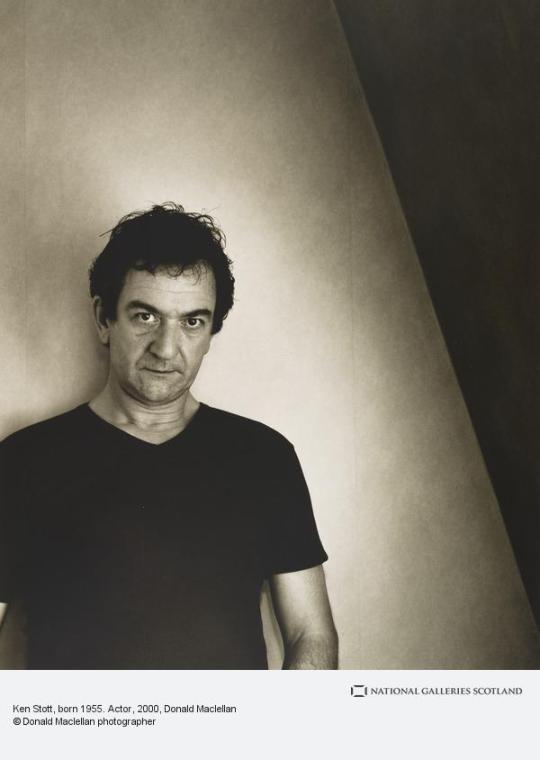
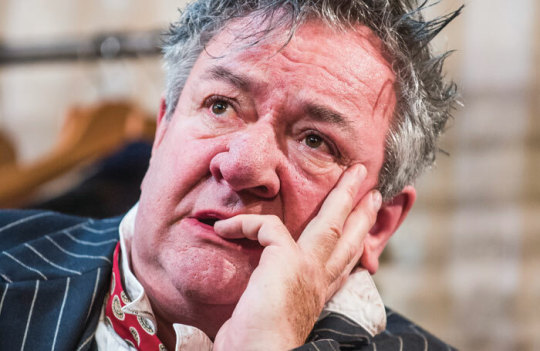

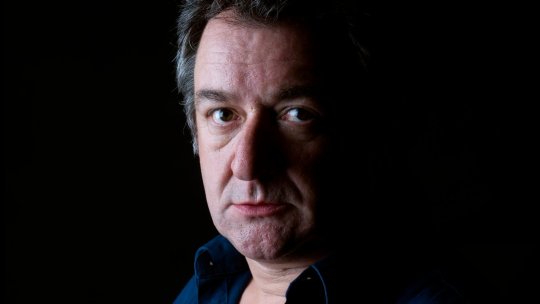

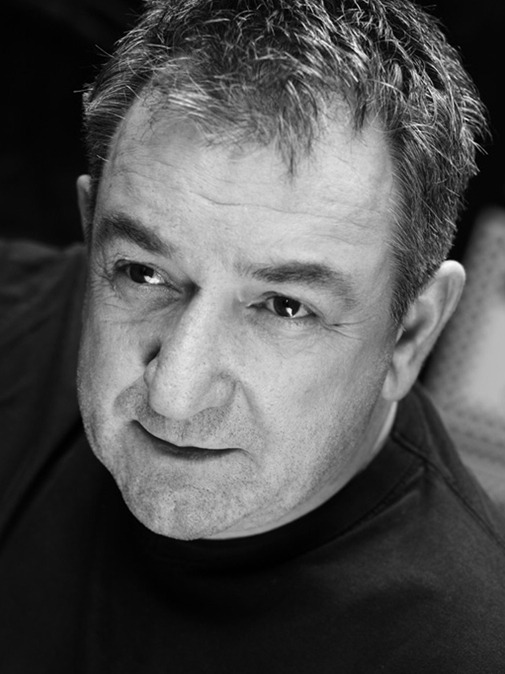
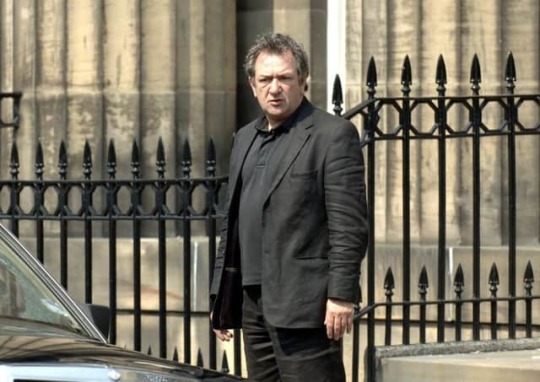
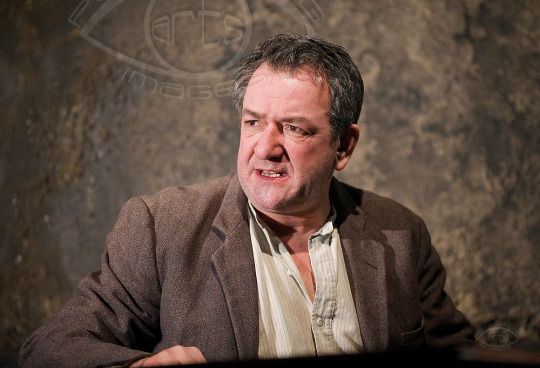

Happy Birthday Kenneth Campbell “Ken” Stott, born on October 19th 1954 in Edinburgh.
Born in 1955 in Edinburgh he was educated at George Heriot’s School where his father was the Head of the English Department, his mum worked as an Italian literature professor at nearby Edinburgh University. The couple frequently hosted actors, singers, musicians and other creative types as part of their involvement with the Scots Italian Circle, a cultural exchange organization that his dad was president of.
Before leaving Edinburgh Stott had been in a band called Keyhole some of the members of the group would later join the Bay City Rollers.
Ken went on to work with the Royal Shakespeare Company but the pay was poor and he subsidised his earnings by selling double glazing. His first TV role was in Secret Army for the BBC, parts in TV shows throughout his career have included, Taggart (of course) The Singing Detective, London’s Burning, Your Cheatin’ Heart and Silent Witness. He was insome good films too, The Debt Collector (with Billy Connolly) , Shallow Grave, (with Ewen MacGregor) and Plunkett & Macleane (with Robert Carlyle).
My favourite shows of Ken’s have been the brilliant BBC Scotland series, Takin’ Over the Asylum in which starred as Double Glazing salesman, but aspiring disc jockey with David Tennant and Angus Macfadyen,The ITV series The Vice was also a cracking series where he played DI Pat Chappel and The BBC show Messiah, where again he played a cop, DCI Red Metcalfe where he learned sign language for scenes with his screen wife, and Rebus of course, when the show was resurrected in 2006, Stott was a first choice for many as D.I John Rebus, John Hannah had the role in the first incarnation.
On film Ken is probably best known for his role as the Dwarf, Balin in The Hobbit trilogy. He is a popular choice for voice work, as narrator for series such as Trawlermen, a documentary following North Sea trawlers, and Send in the Dogs, following the work of Police Officers and their canine partners. Ken’s last movie was the Netflix film, The Dig, a true story based on an archaeological dig in Suffolk in 1938, it is a charming gentle film and a joy to watch, Stott plays archaeologist Charles Phillips.
One of my favourite stories about Ken Stott echos the no nonsense approach of Rebus, on stage during Arthur Miller’s A View From The Bridge, he halted the play when a group of teenage schoolkids were misbehaving and disturbing the show, switching from his stage American to his native Scots accent he told the teacher responsible for the children to remove them, or the play would not go on. The house lights were switched on and there was then a 15-minute stand-off as discussions took place with the offending youngsters.
The audience took the side of Stott and even resorted to chanting ‘out, out, out’ in extraordinary scenes. Eventually the three culprits and an embarrassed teacher was forced to creep away before the play resumed at the Duke of York’s Theatre.
Stott was recently in the Scottish police drama, Crime, along with fellow Scots’ Joanna Vanderham, Dougray Scott, Allison McKenzie, and the excellent Jamie Sives from the BBC series Guilt. Ken is signed up to return to as Detective Chief Superintendent Bob Toal in Crime, but has been on our screens in the Sky drama series Devils, appearing in 7 episodes as Professor Philip Wade.
16 notes
·
View notes
Text
Some male beauty gurus to follow instead of Jeffree Star and James Charles
My personal favorites are first
Thomas Halbert (my personal favorite!)
Kenneth Senegal (HeFlawless)
Malibu Dollface
Miles Jai (MilesJaiProductions)
Manny Gutierrez (Manny Mua) (People have mixed feelings about him but I personally like him)
Patrick Starr
Bretman Rock
Alex Rivera (AlexFaction)
Angel Merino (Mac_Daddyy)
Tim Owens (skelotim)
Gabriel Zamora
Alan Macias (Alannized)
Jordan Liberty
Lewys Ball (lookingforlewys)
Wayne Goss
Damilola Adejonwo
The rest are listed in no partciular order
Wesley Benjamin carter
Kian Owen (SimplyKian) This kid is 14 and incredible
Jonathan Curtis
Cameron Pulido
Arabia Felix
Erick Hanson
Jonysios
Marc Zapanta
Arieh Simon
Jake Jamie Ward (The Beauty Boy)
Jack Emory
Mathias Alan Mathias4Makeup
Zachary Edward
Michael Finch
Ryan Potter
Jean Francois (His tutorials are in french so keep that in mind) (Jeanfrancoiscd)
Will Cook
Seth Baron-Roberts (sethakins7)
Miss Fame
John Maclean
Eduardo Aranda Torres
Arda Bektaş (his videos are in Turkish so keep this in mind)
Merkür Can (Also Turkish)
Frankie Monroe
Juju Galaxsea (StylezByJuBae)
Billy Huynh
#male makeup#male makeup artist#male mua#male beauty#gay beauty#gay makeup#gay mua#when I get on my computer I'll put links to all of their channels
28 notes
·
View notes
Text
Top Ten Tuesday: Best Dads in Literature
Top Ten Tuesday: Best Dads in Literature
Top Ten Tuesday is a meme started by The Broke and the Bookish. Today’s topic is best dads in literature. Janet Several best dads on my list aren’t biological fathers, but exemplary guardians, mentors, and father-figures. Hyperlinked names lead to reviews; hyperlinked titles lead to the actual text. (Yay, webcomics!) Ballister Blackheart, Nimona’s nominal boss in Noelle Stevenson’s Nimona. The…
View On WordPress
#Airborn#Amy Unbounded#Crooked Kingdom#elizabeth marie pope#Firewing#Flowerpot#Gillian Newland#I Am Not a Number#Jenny Kay Dupuis#Jill Maclean#Joseph Bruchac#Kathy Kacer#Kenneth Oppel#Kevin Sands#Leehama#leigh bardugo#Mangoverse#Nimona#Noelle Stevenson#Outrun the Moon#rachel hartman#shira glassman#stacey lee#The Blackthorn Key#The Hidden Agenda of Sigrid Sugden#The Perilous Gard#The Warriors#Under the Aegis#Vimeddie
0 notes